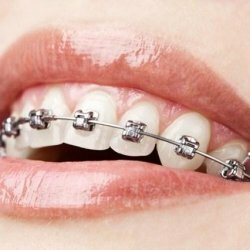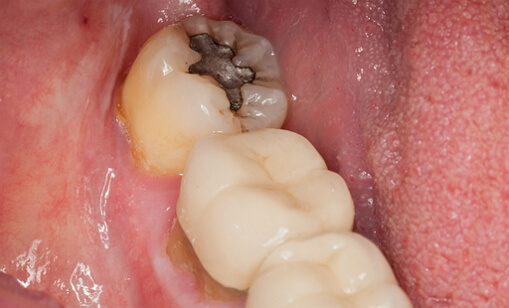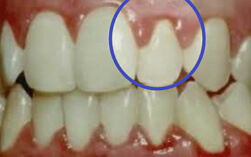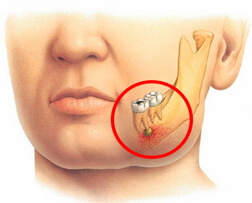Types of braces
 Braces are used to correct bite in adults and children. They appeared more than 40 years ago and are now widely used in dental practice. Invented the bracket system Edward Engel - American orthodontist. Initially, the braces were a huge design, which was very uncomfortable and had many shortcomings. However, for a couple of decades it has been improved and today the braces look not only neat, but also beautiful on the teeth.
Braces are used to correct bite in adults and children. They appeared more than 40 years ago and are now widely used in dental practice. Invented the bracket system Edward Engel - American orthodontist. Initially, the braces were a huge design, which was very uncomfortable and had many shortcomings. However, for a couple of decades it has been improved and today the braces look not only neat, but also beautiful on the teeth.
The successful improvement of the bracket system began when the thermoactive nickel-titanium alloy was invented. From such an alloy are made arcs for braces. Thanks to these arcs, teeth are aligned relatively quickly and efficiently.
What is a bracket system?
The bracket system is a fixed orthodontic device. Each brace is attached with a special glue on each tooth in such a way as to act on it at the right angle. Due to this, the teeth take the correct position. The braces are stretched orthodontic arc, which is the main force. Due to the arc on the teeth is the pressure, and they take the right position.
For bite correction, not only braces and an arc are used. The bracket system also consists of orthodontic rings, ligatures, elastic chains, metal springs, buccal locks.
The principle of operation of a simple bracket system is as follows: an orthopedic arc is fastened to the bracket with a ligature. However, there are also such types of braces in which ligatures do not need to be used. This type of bracket system is called a self-regulating bracket system. Here, instead of ligatures, special locks are used, in which the fixing elements are located.
However, the result of treatment does not depend on the choice of the bracket system, but on the choice of the orthodontist who calculates the treatment.
Some do not understand how teeth can move. After all, their roots are located deep in the jaw. In fact, each tooth can freely move under the influence of pressure. Each tooth is located in its well, and if the tooth is acted upon by force, the well begins to dissolve, thereby creating the necessary space for the movement of the tooth. On the other hand, the tooth is surrounded by elastic fibers of connective tissue. When these fibers break, bone tissue is formed in the free space, which supports the tooth. Due to this, the tooth can not return to its original place throughout life.
Each person has individual problems with bite. Therefore, you need to choose the type of bracket system individually. To properly choose a bracket system, it is necessary to take into account the age of the patient, the severity of the malocclusion, the amount that the person relies on, and also some other factors.
It should be understood that during treatment you will have to buy additional materials and devices: kappa, trainer, special means for oral care.
To date, in orthodontics, six types of bracket systems are used: ceramic, metal, sapphire, linguistic, titanium and Invisible.
Metal braces
The metal bracket system is the most popular. These braces are the most reliable, functional and affordable. Usually it is this type of braces that are used to correct complex defects of the dentition. Braces are suitable for both children and adults.
Metal braces align the teeth thanks to the arc and ligatures. Ligatures are elastic rubber bands that are put on top of the bracket and help fix the arc. Ligatures are multi-colored, so many people prefer to use them.
Metal braces have many advantages over other types of bracket systems. First, they are the most durable. It is almost impossible to break them. In addition, they are the most affordable. Ligatures that are used for such bracket systems are colored, as mentioned above. Therefore, unlike transparent ligatures, which are used for ceramic and sapphire bracket systems, the color ones do not stain.
Some dentists say that using metal braces requires much less time to repair the defects of the dentition. However, this issue is controversial. The advantage is that metal braces can be glued over many times, which can not be said about other varieties.
The drawbacks are that the metal braces are very noticeable on the teeth and do not look very aesthetic. In addition, they can create discomfort in the mouth, so it will take some time to get used to them. Metal braces at first can rub the mucous membrane of the mouth, which can cause sores and wounds. However, in such cases it is necessary to use orthodontic wax.
Ceramic braces
This bracket system is made of high-strength special glass. They are almost invisible on the teeth, so they are often chosen by those people for whom aesthetics are important. Ceramic braces are more comfortable and less often rub the oral mucosa.
However, there are disadvantages to such braces. First, it's their value. It is an order of magnitude higher than that of metal braces. Secondly, braces from ceramics are quickly colored from coffee, tea, wine and other coloring products. And not only braces, but also ligatures are painted. However, ligatures are replaced every month, and braces can be cleaned with paste. Thirdly, when wearing such a bracket system, the wearing time of brackets is increased. With complex bite disorders, this kind of braces is not used for treatment.
Sapphire braces
For sapphire braces specially grown sapphires are grown artificially. Therefore, these braces are very expensive. However, they are strong enough and effective. Sapphire braces are the most aesthetic, as they are completely transparent and invisible on the teeth. Unlike ceramic braces, braces of sapphires do not stain from food, but ligatures can stain.
When wearing sapphire braces, it is often necessary to make professional oral hygiene. Such a bracket system is not suitable for people with complex bite problems. For each patient, braces are made individually. Sapphire braces do not irritate the mucous membrane of the oral cavity.
lingual braces are installed from the inside on the teeth. Therefore, for others, it is absolutely invisible. But such braces are very difficult to install, in addition, the patient experiences severe discomfort when wearing them. They can distort the speech. It is much more difficult to take care of linguistic braces. Staples for this type of braces are made of metal. Usually it takes several days for the patient to get used to such braces. In the first couple of weeks, the language may be aggravated by discomfort.
The drawback of such braces is that they have to be worn longer than other bracket systems. Such a system is established only when there are no serious violations in the bite. They are not installed if the patient has too short lower teeth. During the wearing of linguistic braces, the patient must be dealt with with a special speech therapist.
Titanium braces
The difference between these braces is that the braces are made not of metal, but of titanium. Such braces are usually given to patients who have allregias for certain metal alloys. Titanium is an expensive material, so braces from it are also expensive.
Invisible
This design is not quite a bracket system. It is very different. Invisible is something like a removable tray. Such a system is made individually for each tooth. She puts on the dentition and presses her teeth, making the teeth even. This type of braces is used only in cases where violations in the bite are insignificant. There are no arcs, ligatures, and so on.
This design can be removed before meals and during brushing. It should be worn at least 22 hours a day. When wearing it, there is no discomfort, rubbing and pain.



